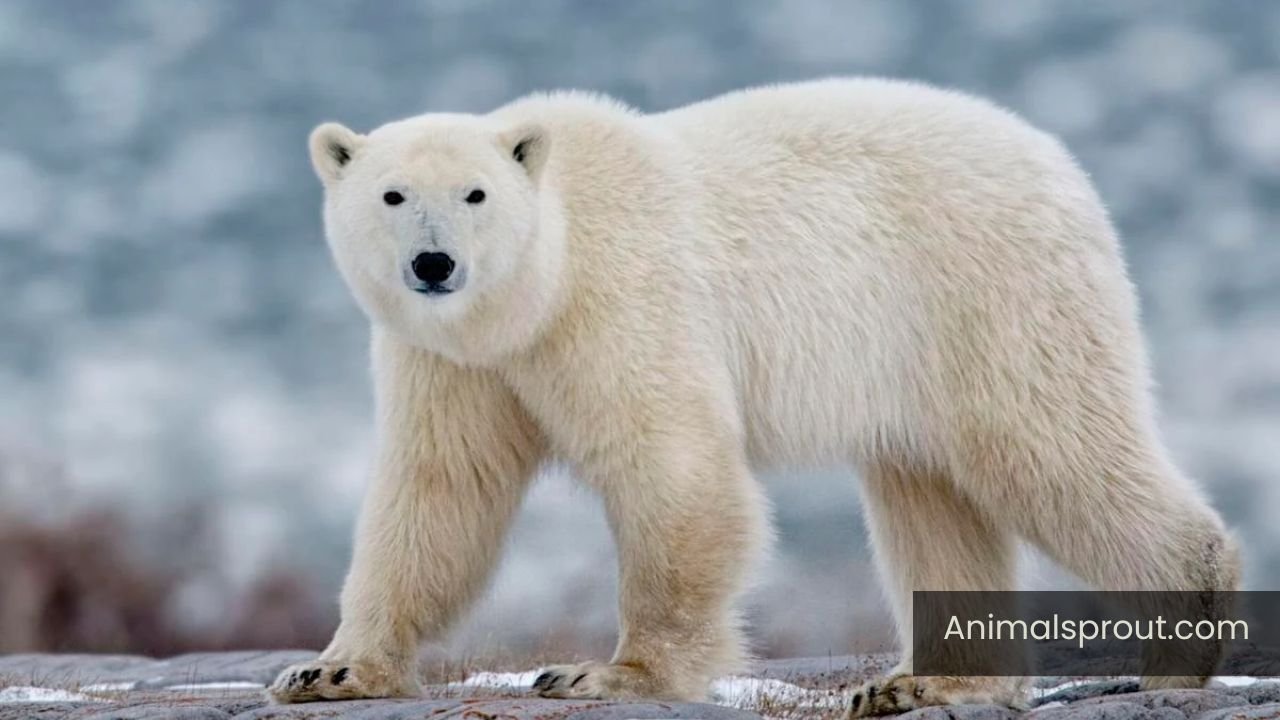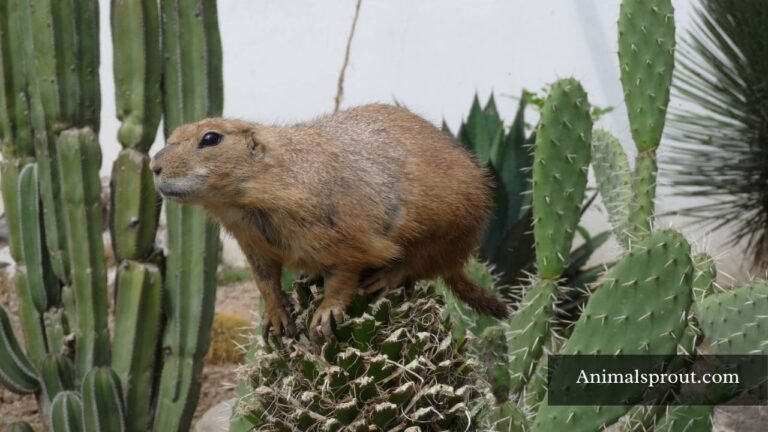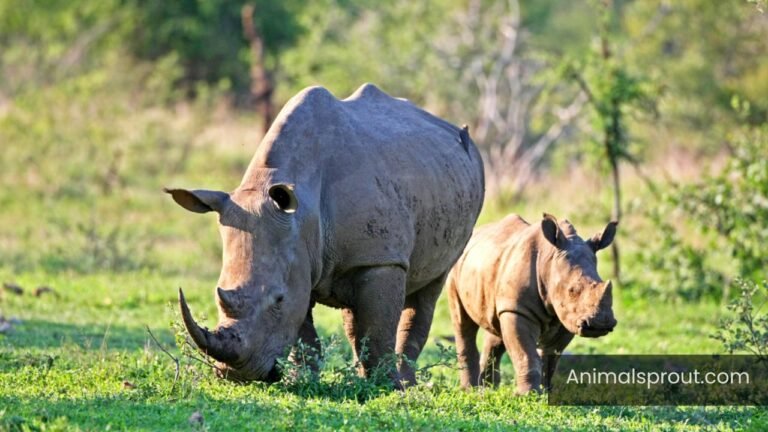Explore Top 20 Animals With Small Ears (Pictures Included)
In our exploration of Animals With Small Ears, we’ll uncover how these unique adaptations affect their survival and behavior in the wild. Understanding the reasons behind these anatomical features not only enriches our appreciation for biodiversity but also sheds light on the evolutionary strategies employed by various species. Join us as we delve into this captivating topic and discover what makes these animals truly special.
List Of Animals With Small Ears
Here is the list of animals with small ears:
| Number Of Animals | Animals that have small ears |
| 1 | Beavers |
| 2 | Polar Bears |
| 3 | Gorillas |
| 4 | Arctic Foxes |
| 5 | Bats |
| 6 | Pygmy Marmosets |
| 7 | Hippopotamus |
| 8 | Kangaroo Rats |
| 9 | Hedgehogs |
| 10 | Elephant Shrews |
| 11 | Scottish Fold Cats |
| 12 | Otters |
| 13 | Musk Ox |
| 14 | Squirrels |
| 15 | Pika |
| 16 | Rock Hyrax |
| 17 | Cuscus |
| 18 | Capybara |
| 19 | Mole |
| 20 | Penguin |
Beavers
North American beaver: Castor canadensis
Eurasian beaver: Castor fiber
Class: Mammalia
Beavers are fascinating creatures that challenge our perceptions of adaptability in the animal kingdom, and their small ears play a pivotal role in their unique lifestyle. These semi-aquatic mammals possess ears that are not only compact but also cleverly designed to minimize water resistance when they dive. Unlike many mammals, the positioning of beaver ears allows them to seal tightly while submerged, enabling them to stay underwater for up to 15 minutes as they work tirelessly on their dam-building projects. This evolutionary trait showcases nature’s ingenuity, highlighting how even seemingly trivial features can significantly impact survival.

Polar Bears
Scientific Name: Ursus maritimus
Class: Mammalia
Diet: Carnivores
Polar bears, the majestic giants of the Arctic, showcase a fascinating adaptation in their small ears. Unlike many mammals that rely on acute hearing to survive, polar bears have evolved with smaller auditory appendages to minimize heat loss in their frigid habitat. This seemingly simple trait is a testament to nature’s ingenuity; by conserving body heat, these apex predators can maintain their strength and endurance while navigating the icy expanses of the North.
Moreover, the reduced size of their ears doesn’t compromise their ability to communicate or detect sounds. Polar bears possess an incredible sense of smell—capable of detecting seals nearly a mile away—far surpassing their reliance on hearing. This unique combination of adaptations not only enhances their hunting prowess but also illustrates how species can thrive in extreme environments through specialized evolutionary traits.
Gorillas
Scientific Name: Gorilla
Class: Mammalia
Diet: Herbivores
Gorillas may not be the first animals that come to mind when thinking about small ears, yet their relatively tiny, rounded ears serve a significant purpose. These ears, often overshadowed by their expressive faces and muscular frames, are perfectly adapted for their dense forest habitats. Unlike many other primates that rely heavily on acute hearing, gorillas have evolved to communicate primarily through body language and vocalizations, such as the deep, resonant calls that echo through the jungle.

Interestingly, gorillas’ small ears also play a role in thermoregulation. In their warm, humid environments, larger ears can lead to excessive heat loss. By keeping their ears compact, gorillas maintain optimal body temperature while still being able to detect important sounds from their surroundings. This unique adaptation reflects the balance between evolution and environmental demands, showcasing the intricate ways nature fine-tunes its creations.
Arctic Foxes
Scientific Name: Vulpes lagopus
Class: Mammalia
Diet: Carnivores
Arctic foxes, with their petite ears, are a marvel of adaptation in the frigid tundra. Unlike many other fox species, their small ears minimize heat loss, a crucial advantage in extreme cold. This seemingly simple trait is a testament to nature’s ingenuity, allowing these creatures to thrive where few others can.
But their small ears do more than just conserve warmth; they also enhance their hearing capabilities. In the vast, snowy landscapes, sound travels differently, and these foxes rely on acute auditory senses to hunt for hidden prey beneath thick layers of snow. Their diminutive ear size is a clever compromise that ensures they remain stealthy predators while navigating the harsh Arctic environment.
Moreover, Arctic foxes showcase an incredible range of fur colorations, shifting from brown and gray in summer to a stunning white in winter. This seasonal transformation not only provides camouflage but also serves as a reminder of their unique adaptability.
Bats
Scientific Name: Chiroptera
Class: Mammalia
Diet: omnivores
Bats, often characterized by their impressive wings and nocturnal prowess, possess surprisingly small ears relative to their body size. These diminutive auditory organs are tailored for a unique purpose: echolocation. Unlike many mammals that rely on acute hearing to detect sounds, bats emit high-frequency sounds that bounce off objects in their environment. Their small ears are efficient receivers of these echoes, allowing them to navigate through the darkest of nights with remarkable precision.

Interestingly, the size of a bat’s ears can indicate its hunting strategy. Species that hunt insects in open areas tend to have larger ears, enhancing their ability to capture sound waves. Conversely, bats that thrive in cluttered environments, like dense forests, often have smaller ears which help them avoid interference from surrounding noise. This adaptability showcases the evolutionary ingenuity of bats, highlighting how even the smallest features can play a critical role in survival and efficiency.
Pygmy Marmosets
Scientific Name: Cebuella pygmaea
Class: Mammalia
Diet: Omnivores
Pygmy marmosets, the smallest monkeys in the world, are a marvel of evolutionary adaptation. These tiny primates, weighing in at just over four ounces, sport disproportionately small ears that perfectly complement their diminutive size. This unique feature not only enhances their adorable appearance but also plays a crucial role in their survival. In the dense canopies of the Amazon rainforest, smaller ears help reduce noise interference, allowing them to communicate effectively through high-pitched calls while remaining stealthy from predators.
Beyond their physical traits, pygmy marmosets exhibit fascinating social structures. Living in family groups, they engage in cooperative breeding, where non-mating members help care for the young. This behavior highlights their complex social dynamics and demonstrates an intriguing blend of individual and collective survival strategies. As these little monkeys navigate their arboreal homes, their small ears contribute to a heightened sense of awareness, allowing them to detect both threats and opportunities amidst the rustling leaves and vibrant sounds of the jungle.
Hippopotamus
Scientific Name: Hippopotamus amphibius
Class: Mammalia
Diet: Herbivores
The hippopotamus, often overlooked for its impressive size and bulk, showcases an intriguing feature: its diminutive ears. Nestled atop its massive head, these small auditory organs may seem inadequate for such a large creature, yet they are perfectly adapted for its lifestyle. When submerged in water, hippos can close their ears to keep out debris, allowing them to remain buoyant while listening for potential threats or communicating with other hippos.
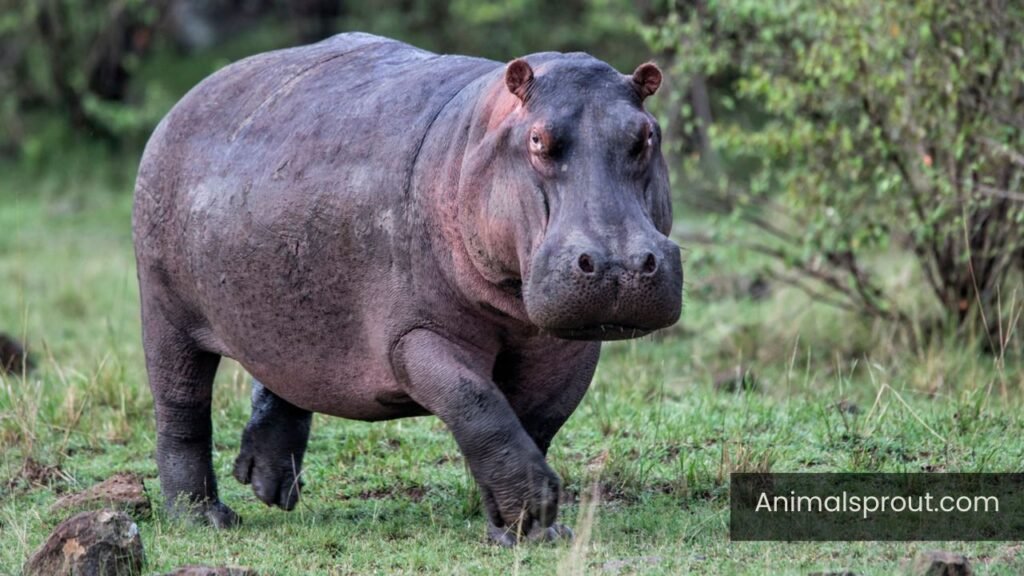
Interestingly, these small ears also reflect the hippo’s evolutionary journey. Unlike many land mammals that rely heavily on acute hearing to navigate their environments, hippos have developed a keen sense of social interaction through vocalizations and physical presence. Their ear structure allows them to be selective about sounds, filtering out the chaos of their aquatic habitat while honing in on the calls of fellow hippos, which can be heard from miles away.
Kangaroo Rats
Scientific Name: Dipodomys
Class: Mammalia
Diet: Herbivores
Kangaroo rats, those nimble nocturnal creatures of the desert, are fascinating not just for their impressive jumping abilities but also for their remarkably small ears. These diminutive features are perfectly adapted to their arid habitats, where minimizing water loss is crucial for survival. Unlike many other rodents, kangaroo rats have evolved to rely on their keen sense of smell and touch rather than acute hearing, allowing them to navigate and forage effectively in the dark.
One might assume that smaller ears would hinder their ability to detect predators, but these agile rodents have developed a unique strategy. They use their powerful hind legs to leap away from danger at lightning speed, relying on instinct and the vibrations of the ground to sense threats.
Hedgehogs
Scientific Name: Erinaceinae
Class: Mammalia
Diet: Insectivores
Hedgehogs may be small, but their peculiar ears are a fascinating aspect of their design. Nestled against their spiky backs, these tiny appendages serve more than just a decorative purpose; they play a crucial role in their survival. Hedgehogs possess an extraordinary sense of hearing, which is vital for detecting predators and locating food. Their small ears amplify sounds in their environment, allowing them to pick up the faintest rustle of leaves or the subtle movements of insects.

Interestingly, the placement of their ears contributes to their unique defensive strategy. When threatened, hedgehogs can curl into a tight ball, effectively shielding their ears and vulnerable body parts with spines.
Elephant Shrews
Scientific Name: Macroscelidea
Class: Mammalia
Diet: Insectivores
Elephant shrews, despite their name, have little resemblance to elephants. These small, insectivorous mammals sport tiny ears that add to their quirky charm. Found primarily in Africa, they are not only fascinating for their appearance but also for their unique adaptations. Their diminutive ears are surprisingly effective; they help minimize heat loss in the warm climates they inhabit, allowing these creatures to thrive in their environments.
What truly sets elephant shrews apart is their remarkable agility and speed. With a body built for quick movements, they can dart away from predators at astonishing speeds. Their keen sense of smell compensates for their limited hearing, guiding them through dense underbrush in search of insects and fruit. The juxtaposition of their small ears and high-energy lifestyle reveals nature’s ingenuity—evolution has equipped these animals with what they need to survive and flourish in the wild.
Readmore: Explore Top 19 Animals That Have Spots On Their Body.
Scottish Fold Cats
Scientific Name: Felis catus
Class: Mammalia
Diet: Obligate Carnivores
Scottish Fold cats are instantly recognizable not just for their charming personalities but also for their uniquely folded ears. These small, rounded ears contribute to their endearing appearance, giving them a perpetually curious look that captures the hearts of cat lovers everywhere. The genetic mutation responsible for this ear fold also affects cartilage throughout the body, resulting in a plush, rounded face that’s as captivating as it is adorable.

Beyond aesthetics, the small ears of Scottish Folds may influence their behavior and communication style. Unlike their larger-eared counterparts, these cats often exhibit a more subtle way of expressing emotions, relying on body language and vocalizations rather than the ear positioning commonly seen in other breeds. This nuanced communication can make interactions with them feel more intimate and rewarding, as owners learn to interpret their unique signals over time.
Otters
Scientific Name: Lutrinae
Class: Mammalia
Diet: Carnivores
Otters, with their small, rounded ears, may not be the first animals that come to mind when considering ear size. Yet, these diminutive features play a significant role in their aquatic lifestyle. Unlike many land mammals, otters have adapted to a life spent largely underwater, where streamlined bodies and smaller ears reduce drag while swimming. This unique adaptation allows them to glide effortlessly through rivers and lakes, showcasing their agility and grace.
Interestingly, otters rely heavily on their other senses to navigate their environment. Their keen sense of touch and excellent eyesight compensate for their less prominent hearing capabilities. When hunting, otters utilize their sensitive whiskers to detect vibrations in the water, ensuring they can locate prey even in murky depths.
Musk Ox
Scientific Name: Ovibos moschatus
Class: Mammalia
Diet: Herbivores
Musk oxen, with their small, rounded ears, are fascinating creatures that thrive in some of the harshest climates on Earth. These Arctic mammals, adorned with thick, shaggy coats, have adapted remarkably to frigid temperatures and strong winds. Their diminutive ears minimize heat loss, a clever survival strategy that allows them to maintain warmth while foraging for grasses and mosses beneath the snow.

Beyond their physical adaptations, musk oxen exhibit a unique social behavior. They form tight-knit herds, often working together to protect themselves from predators like wolves. When threatened, they can form a defensive circle, showcasing not just their strength but also their cooperative spirit.
Readmore: Explore Most Energetic Animals In The World.
Squirrels
Scientific Name: Sciuridae
Class: Mammalia
Diet: Omnivores
Squirrels, often seen darting through parks and backyards, might not immediately draw attention with their small ears. These petite appendages, however, play a crucial role in their survival. Unlike larger-eared animals that rely on acute hearing to detect predators from afar, squirrels utilize their keen sense of smell and sharp vision to navigate their environments. Their small ears help reduce the risk of overheating while they scurry about, especially in warmer climates.
Interestingly, these little creatures are social animals that communicate using a range of vocalizations and tail signals, compensating for their less prominent hearing capabilities. Their agility and speed often overshadow their auditory limitations; a squirrel can leap up to ten times its body length to escape danger.
Readmore: Explore Top 18 Scavenger Animals In The World (With Images).
Pika
Scientific Name: Ochotona
Class: Mammalia
Diet: Herbivores
Pikas, small mammals found in the rocky mountain ranges of North America and Asia, are captivating creatures with their distinctive small ears. These tiny herbivores resemble a mix between a rabbit and a guinea pig, but it’s their unique adaptations that truly set them apart. Unlike many other mammals, pikas have short, rounded ears that help minimize heat loss in their frigid mountainous habitats. This design is not just for aesthetics; it’s a clever evolutionary trait that aids in thermoregulation.
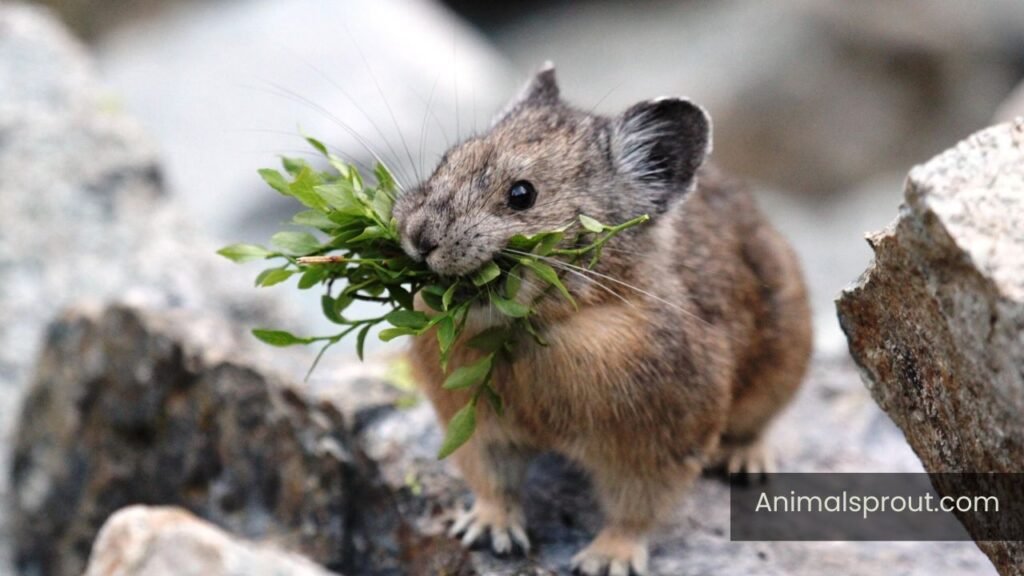
What’s fascinating is how these diminutive creatures communicate. Pikas use a series of high-pitched calls to warn each other of predators, with their small ears finely tuned to pick up sounds in their environment. Their vocalizations not only serve as alerts but also play a role in establishing territory, showcasing the importance of sound over size. Furthermore, pikas are known for their impressive foraging skills, gathering and storing food during the warmer months to survive harsh winters—another testament to their resilience and adaptability in challenging climates.
Rock Hyrax
Scientific Name: Procavia capensis
Class: Mammalia
Diet: Herbivore
The rock hyrax, often overlooked in the animal kingdom, is a fascinating creature that thrives in rocky terrains across Africa and the Middle East. Despite its small ears, which seem almost comically tiny compared to its stocky body, this mammal possesses a remarkable adaptability. These diminutive appendages might suggest a limited range of hearing, but they are perfectly suited to the hyrax’s environment, allowing it to detect the subtle sounds of predators lurking nearby.
Interestingly, the rock hyrax is more closely related to elephants than to rodents, showcasing an evolutionary twist that challenges our perceptions of animal lineage. Their social structure is equally compelling; living in colonies, they communicate through a series of vocalizations that resonate within their rocky habitats.
Cuscus
Scientific Name: Phalanger
Class: Mammalia
Diet: Herbivores
The cuscus, a marsupial native to the lush forests of New Guinea and surrounding islands, is a fascinating example of evolution’s quirks. With their notably small ears, these nocturnal creatures have adapted to a life primarily spent in the canopy, where larger ears might be more of a hindrance than a help. Instead of relying on acute hearing, cuscuses have developed an extraordinary sense of smell and excellent night vision, allowing them to navigate their arboreal homes with grace.

These furry foragers are also masters of camouflage, sporting fur that mimics the textures and colors of their leafy surroundings. This adaptation not only aids in evading predators but also plays a crucial role in their hunting strategy. As herbivores, cuscuses feed on a diet rich in leaves, fruits, and flowers, making them essential contributors to their ecosystem by aiding in seed dispersal.
Also read: Explore Top 13 Animals That Live in Bogs (With Pictures).
Capybara
Scientific Name: Hydrochoerus hydrochaeris
Class: Mammalia
Diet: Herbivores
The capybara, the world’s largest rodent, sports surprisingly small ears that seem almost comically out of proportion to its massive body. While these diminutive features may seem insignificant, they play a crucial role in the capybara’s survival strategy. Unlike many animals that rely heavily on acute hearing to detect predators, capybaras utilize their other senses—especially smell and sight—to navigate their lush, watery habitats. This evolutionary adaptation underscores a fascinating aspect of their behavior: rather than relying solely on auditory cues, they maintain a keen awareness of their surroundings, often grazing peacefully while remaining alert to potential threats.
In social groups, these gentle giants communicate through a variety of vocalizations, from soft purrs to sharp barks, compensating for their small ears with rich social interaction. Their small ear size may also help reduce water resistance when they swim, allowing them to glide effortlessly in rivers and wetlands.
Moles
Scientific name: Talpa europaea
Class: Mammalia
Moles, those elusive underground dwellers, might be famous for their powerful digging claws, but their small ears are equally fascinating. Nestled close to their bodies, these tiny auditory organs are a remarkable adaptation to their subterranean lifestyle. In the dark tunnels where they spend most of their lives, large ears would only be cumbersome, attracting dirt and hindering movement. Instead, moles rely on their acute sense of touch and the vibrations in the ground to navigate their world, making their small ears just the right fit for their niche.
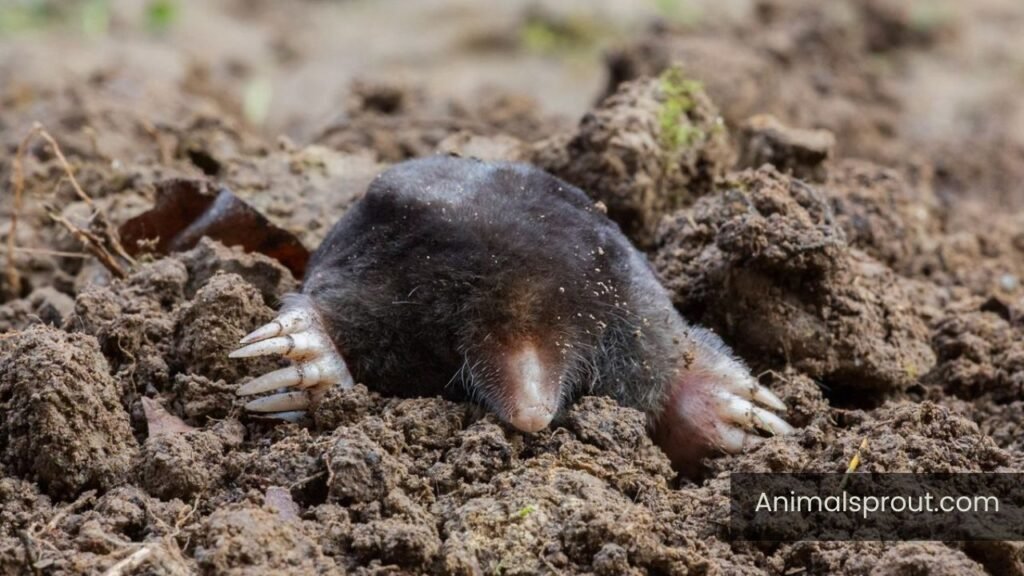
Interestingly, moles are almost blind, so their hearing becomes crucial for communication and detecting predators. They can pick up the faintest sounds of potential threats or mates through the soil, allowing them to react swiftly. This unique reliance on limited sight and enhanced hearing highlights a remarkable example of nature’s ability to adapt.
Penguins
Scientific name: Spheniscidae
Class: Aves
Penguins, with their iconic waddles and tuxedo-like appearances, are not just charming but also fascinating in their adaptations. Their small ears, often overlooked amidst their striking features, play a crucial role in their survival. Unlike many mammals that rely heavily on acute hearing, penguins have evolved to thrive in the icy depths of the ocean where sound travels differently. Their auditory system is finely tuned to detect the calls of fellow penguins and the sounds of predators, allowing them to navigate their frigid habitats effectively.
Moreover, the positioning of their ears—hidden beneath layers of feathers—helps reduce heat loss in the harsh Antarctic climate. This clever adaptation not only conserves energy but also protects their sensitive inner ear structures from freezing temperatures. As they dive into the cold waters, their small ears shield them from water pressure and turbulence, making it easier to focus on locating fish.
Readmore: Explore Animals that Are Quiet in the world.
Final Words
Animals with small ears have adapted remarkably to their environments, showcasing the incredible diversity of nature’s designs. These adaptations often serve crucial functions, such as reducing heat loss in arid climates or minimizing sound distraction in densely forested areas.
By understanding the roles that small ears play in the survival of these species, we gain insight into the intricate relationships between anatomy and habitat. Furthermore, appreciating these unique adaptations can foster a greater respect for wildlife conservation efforts. Let us continue to explore and protect the fascinating creatures that share our planet.
FAQs
What animals don’t have ears?
Many animals do not possess external ears as we typically recognize them in mammals. For instance, fish do not have ears in the conventional sense; instead, they have specialized structures called otoliths that help them detect sound vibrations in water. Similarly, amphibians like frogs and toads have internal ear structures but lack the prominent outer ears found in many land animals. Their hearing relies more on the vibrations that travel through their environment rather than airwaves.
What animals have floppy ears?
Floppy ears can be found in a variety of animals, both domestic and wild. One of the most recognizable is the dog, with breeds like Basset Hounds and Cocker Spaniels showcasing those adorable droopy ears. These floppy ears serve various functions, such as enhancing their sense of smell and helping to regulate body temperature. Other animals with floppy ears include certain rabbit breeds, like the Holland Lop and the English Lop, which are known for their long, drooping ears. Some farm animals, like pigs and goats, can also have floppy ears.
What animal has small round ears?
Several animals are known for their small, round ears. One of the most recognizable is the domestic cat. Their ears are not only small and round but also highly expressive, helping convey a range of emotions from curiosity to annoyance. Another example is the Pika, a small mammal found in mountainous regions. Pikas have rounded ears that help them stay warm in their chilly habitats.

